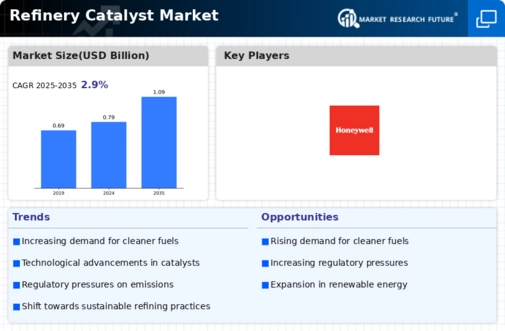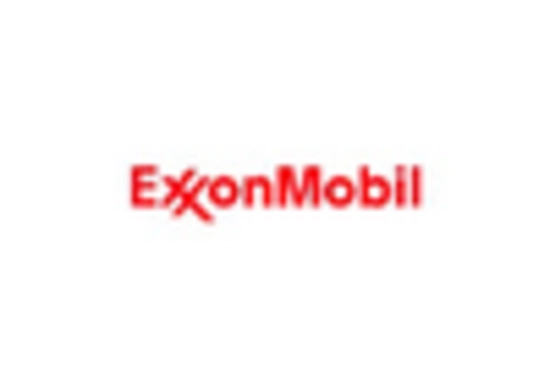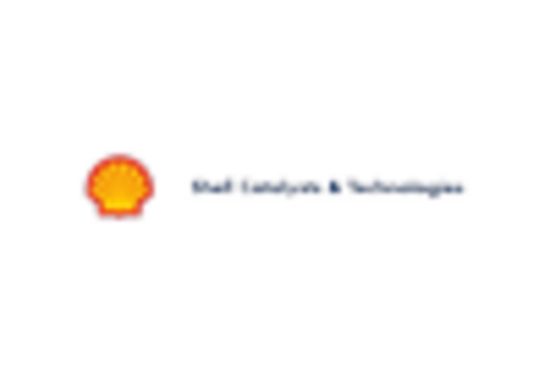Market Trends
Key Emerging Trends in the Refinery Catalyst Market
Refinery Catalyst market trends are driven by the dynamic refining industry and the search of greener and more efficient processes. The refinery catalyst industry is seeing a rise in demand for clean fuel catalysts. Refineries are investing in catalyst technology to efficiently convert feedstocks into cleaner products due to strict environmental laws and an increasing focus on emissions. The generation of low-sulfur fuels and regulatory compliance depend on catalysts in hydrocracking and hydrotreating.
These hydrocarbons include sulfur, which prevents proper use and reduces refinery catalyst market demand. Manufacturing feedstocks instead of rising fuel prices is a growth challenge for catalyst makers. Reduced crude oil prices and resource availability make scale expansion difficult. Growth will be challenged by the shift to a carbon dioxide-neutral world.
Refinery Catalyst market trends are also affected by renewable and bio-based feedstocks. Refineries are investigating biofuels and biomass to provide cleaner, greener fuels as the globe moves toward a more sustainable energy future. Catalyst producers can design and deliver bio-based refining catalysts to handle these alternative feedstocks.
Optimizing production and refining efficiency is pushing the introduction of improved catalyst technology. For processing flexibility and higher product yields, refineries are investing in catalysts with higher activity, selectivity, and stability. This trend improves refining efficiency and competitiveness by integrating novel materials and formulations into catalyst development.
Technology drives Refinery Catalyst market trends. Improved performance, deactivation resistance, and catalytic activity are the goals of catalyst research and development. Refineries need catalyst design and manufacturing innovations to process heavier feedstocks, minimize energy use, and comply with environmental standards.
Regions' refining capacity and development activities affect the Refinery Catalyst market's distribution. Growing refining sectors in Asia and the Middle East are driving refinery catalyst demand. Market participants position themselves to capitalize on emerging prospects and handle regional refinery challenges.
Global efforts to reduce carbon emissions also affect Refinery Catalyst market trends. CCU and CCS are being investigated by the refining industry to minimize greenhouse gas emissions. Refineries reduce their carbon footprints by boosting carbon capture technology efficiency with catalysts.
Rising circular economy awareness is affecting Refinery Catalyst market trends. In order to maximize resource usage and decrease waste, refineries are using catalysts that enable recycling and regeneration. By prolonging catalyst lifespan and decreasing replacements, catalyst regeneration technologies help refineries be more sustainable.

















Leave a Comment